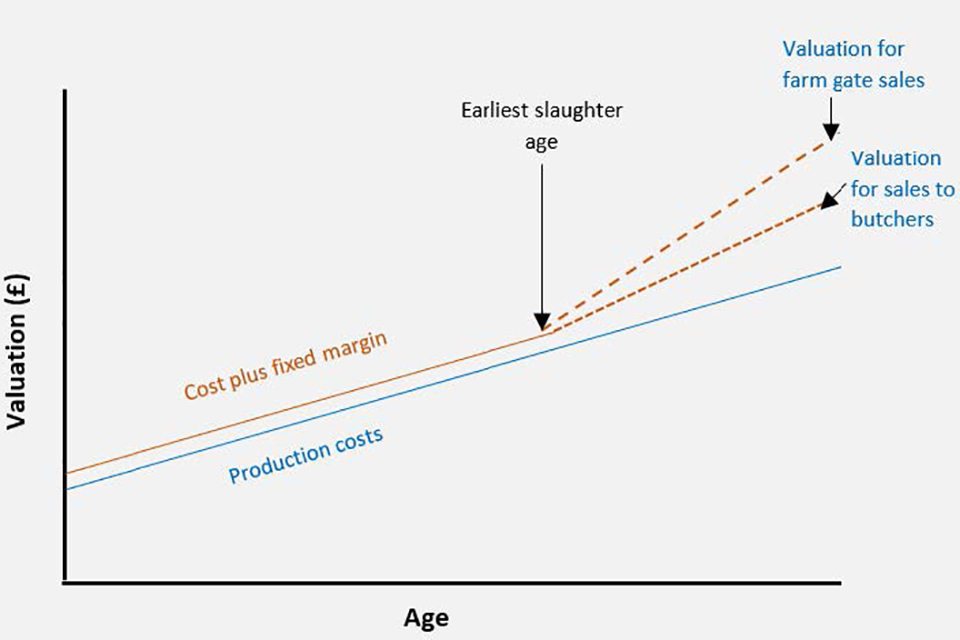Poultry valuation tables: introduction
Updated 8 December 2025
The government has powers to cull (kill) animals to control the spread of some animal diseases.
For bird flu and Newcastle disease, you’ll get compensation for any healthy birds that are culled by the government. Read guidance on compensation for certain diseases in poultry and other captive birds.
The Animal and Plant Health Agency (APHA) uses poultry valuation tables (or specialist valuers for specialist stock) to determine compensation for poultry culled. These tables are produced for the APHA by the agricultural and environmental consultancy, ADAS.
Poultry valuation tables are reviewed and updated regularly to ensure that they reflect current costs for different types of birds and different production systems. Normally, these reviews are undertaken quarterly, with new tables being issued late in March, June, September and December each year. Due to the recent volatility in production costs and the number of avian influenza cases in Great Britain, these timings have been changed to include updates in November and January, rather than in December.
The current valuation tables are based on costs and other information gathered in November 2025.
Types of poultry included
The poultry valuation tables include information about:
- broilers
- laying hens
- turkeys
- ducks and geese
- game birds (pheasants, partridges and mallards)
The tables also include information about production systems, such as indoor, free range and organic.
Data sources
Numerous sources are used to gather data on current costs. These include published information as well as intelligence provided confidentially by a range of different industry stakeholders, such as feed compounders, breed companies, suppliers of fuels and other materials and poultry producers. Where possible for each cost item, information is gathered from a range of different sources, so that overall sector trends can be established.
Data summary
Since the last update in September, compound feed prices for poultry have generally increased but there have been some reductions in the organic sector. Day-old and point-of-lay prices have mostly remained steady.
The cost of fuel for heating and electricity has remained fairly stable. Smaller items such as land management costs for outdoor systems have been reviewed.
The standard broiler table has been revised and it is now based on a stocking rate of 30kg per square metre. A new table has been created for white laying hens in free range systems. The year 1 and year 2 tables for partridge breeders have been merged into a single table.
The accompanying notes provided with each valuation table have been reviewed and revised as necessary.
Next update
The next update is scheduled for the end of January 2026.
Contact
For further information, email Mailys.Chezaud@adas.co.uk
ADAS
November 2025.
Methodologies used in developing the poultry valuation tables
How the tables are calculated
For most table poultry species and for rearing birds, the valuation at each flock age is calculated from the costs incurred for a typical flock, to that point. Throughout the production cycle, a small fixed financial margin is added to the production costs to reflect notional market value and this is indicated by the higher of the two lines. (Figure 1). Costs at the time of stocking are derived from the cost of the chick or poult and the house ‘set-up’ costs.

Figure 1. Valuation principles for table birds and replacement layers
For egg laying flocks, valuations are based on typical costs incurred and the expected final value of the bird at the time of depopulation. After transfer to the laying house, the valuation rises to a peak value when egg revenue begins to flow. From this point, the value of the bird is depreciated on a straight-line basis to the expected end-of-lay value (Figure 2).

Figure 2. Valuation principles for egg laying birds
Some table bird enterprises (for example, geese and seasonal turkey production) attain a very high market value at normal slaughter ages relative to their costs of production. In order to address this issue and arrive at valuations that are fair and reasonable for this type of enterprise, valuation principles have been developed that are based on costs of production (with a fixed margin) up to the point at which the birds can normally be marketed. Once the birds are at an age when they are mature enough to be slaughtered and offered for sale through regular channels, the valuations are based on expected marketing method (to butchers or farm gate sales) and typical sales price, less slaughter, processing and distribution costs (Figure 3).

Figure 3. Valuation principles for high value birds
